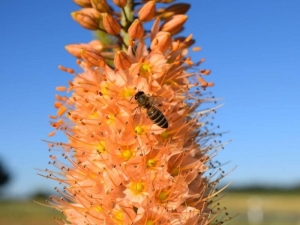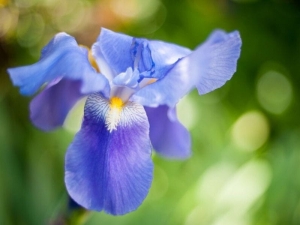This plant can survive lots of neglect and growing conditions that will kill many other plants, such as substantial shade. It has arching, lance-shaped, deep green, glossy leaves that can reach around 2 feet long and 4 inches wide. When grown outdoors, it sometimes produces insignificant cream and purple flowers near the base of the plant, but the blossoms usually do…
The foliage shows compact growth and the upright stem in the later years of growth transform into climbing stem. Native to Central and South America and known for their unique arrow-like leaf shape, Arrowhead plants are easy to grow and do well in low to medium light. The Goosefoot or Arrowhead plant is named so because of the arrow or…
Monstera deliciosa likes moderate indoor temperatures of 60 to 85 degrees. It prefers high humidity, but it will adapt fine to dry indoor conditions. If you really feel like nurturing it, you can mist it occasionally to boost humidity—but it’s not entirely necessary. The Swiss cheese plant displays the most interesting looking leaves and needs a grower to be prepared to provide…
Foxtail Lilies bloom from spring to midsummer, producing dense clusters of small star-shaped flowers on tall, erect stems. Eremurus are known for their distinctive, bottle brush flowers that can rise to a height of 7 feet. The blossoms open from the bottom up and are available in colors ranging from white and pink to yellow and orange. These impressive early…
The Dutch Iris is a type of iris that produces blue, yellow, or white blooms. These plants grow one to two feet tall, and they need full sun to grow well. They don’t spread much, only about half a foot at most, and you grow them from a bulb. They need well-drained soil to grow well, and they bloom between…
With small, showy flowers on low-mounding to sprawling plants, diascia can be used interchangeably with alyssum, pansies, nemesia and other cool season annuals. The flowers of diascia come in a range of pinks, whites, corals, and oranges. During cool weather, the plants are covered in blossoms. With delicate, prolific blooms reminiscent of open-face snapdragon flowers, diascia is a colorful option for early spring…
Although desert rose is a beautiful, low-maintenance plant, it can become long and leggy in time. Pruning will avoid this problem by creating a bushy, fuller-looking plant. Caring for desert rose plants requires a full sun location and well-drained soil. Properly mimicking their native regional conditions will garner plenty of rose-like blooms on an architectural marvel of a plant. The…
Delphiniums are perennials grown for their showy spikes of colorful summer flowers in gorgeous shades of blue, pink, white, and purple. They are popular in cottage-style gardens and cutting gardens. They prefer moist, cool summers and do not fare well in hot, dry weather. The plants also dislike sudden wind or rain. The delphinium is a tall flower, growing around 39…
They thrive in almost any type of soil, will grow in sun or shade, and are rarely troubled by insect pests or disease. Daylilies are known for their toughness, but they also dazzle with their big, colorful flowers. Blooming starts in midsummer and continues into early fall, with new blossoms opening each day. The Daylily is not a true lily. So…
Dandelion is a plant with yellow flowers. Taraxacum officinale is the most common variety of this plant, and it grows in many parts of the world. Botanists consider dandelions to be herbs. People use the leaves, stem, flower, and root of the dandelion for medicinal purposes. Dandelion leaves, stems and flowers are often consumed in their natural state and can be eaten…











